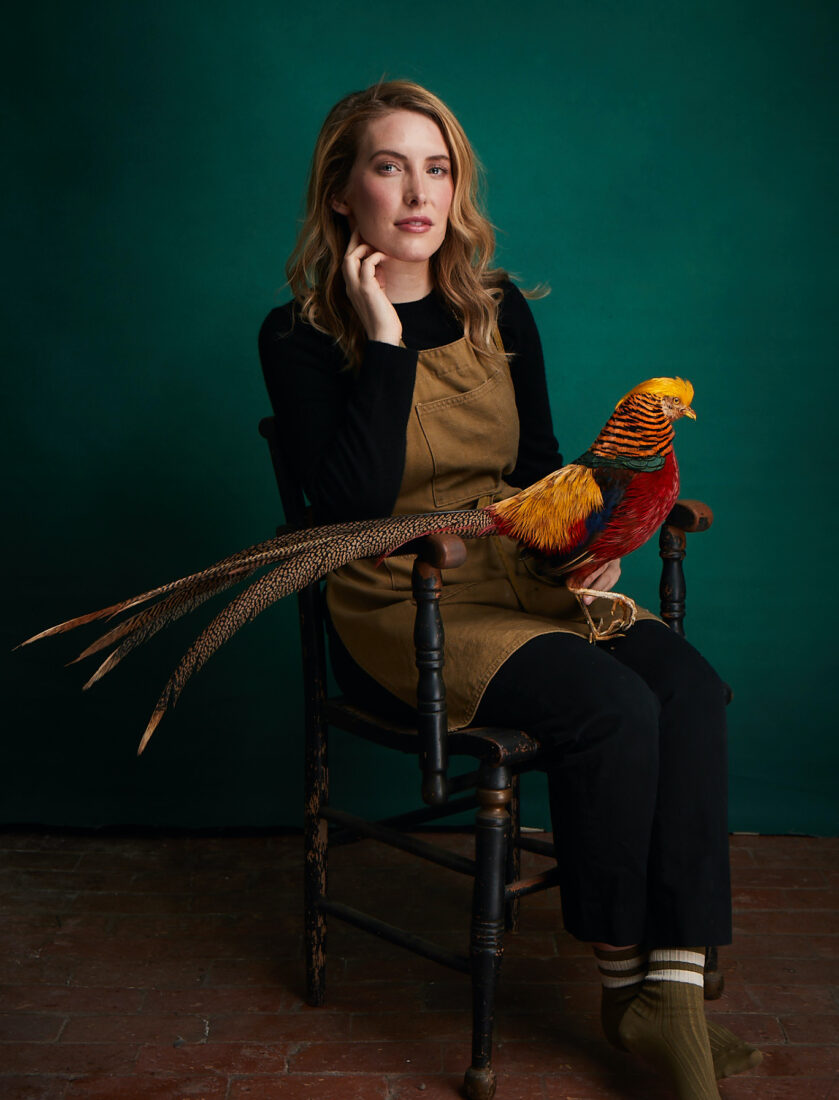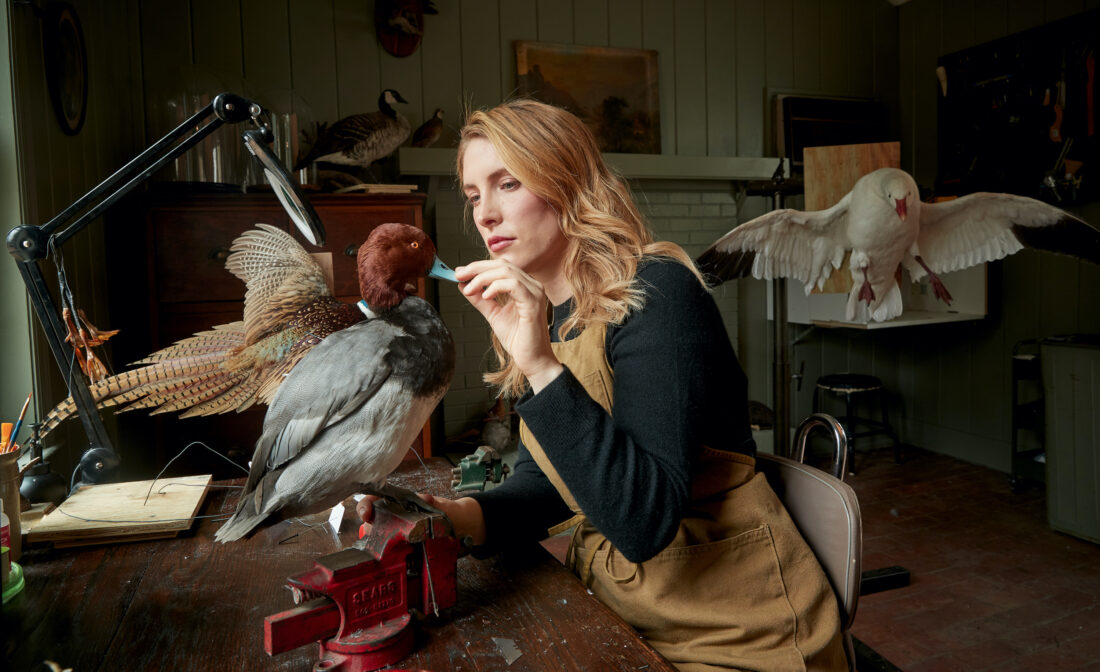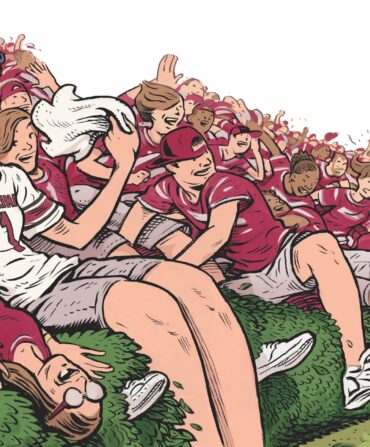Not unlike an ambitious portrait artist, Erica Heller aims to capture the living essence of her subjects. But instead of brushes and paints, she first reaches for scalpel and fleshing box, a contraption containing a spinning wire brush that removes tissue and fat from the inside-out remains of dead animals. Though the taxidermist has mounted big game, five years ago she narrowed her focus to birds.

Rather than studying her subjects in her Richmond studio, Heller goes to them, tromping and tiptoeing through fields, woods, and prairies to observe birds’ behaviors—what they eat, how they stand, what they really look like. Waterfowl change color each season depending on their diet, for instance, and wild birds are brighter than those raised in pens. While alive, the Hungarian partridge has a pink dot behind its eye. “As soon as a bird dies, it starts looking dead,” Heller says. Only later, once she’s cleaned and mounted a specimen, does she pick up a paintbrush, adding life and color back to the skin. She never messes with the feathers, though. “Nature is unique,” she says. “Depending on how the light’s hitting the feathers, there are things that you could never paint onto these animals.”

Raised in Greensboro, North Carolina, Heller scored an internship at the North Carolina Museum of Natural Sciences while she attended UNC–Chapel Hill. She prepared study skins, cleaned skulls, and learned how the museum staff created dioramas of habitats behind glass. A mix of passions—for natural history, science, anatomy, art, craft, and design—ignited, pointing in one obvious but uncommon career direction. After college, Heller enrolled (as the only woman) in a taxidermy program at a trade school in Troy, North Carolina.
She had never hunted. A vegetarian, Heller vowed to only mount animals that died from natural causes. But that changed after she landed an apprenticeship in Montana with Dale Manning, one of the world’s top taxidermists, a perfectionist who once spent more than forty hours painting the feet of a mounted coot.
In Montana, Heller also met a falconer with a setter and became smitten—with the dog. She got her own English field setter and named her Arrow. If that beautiful, spirited creature was going to live a purposeful life, Heller realized, they would have to hunt. The decision ended her meat avoidance and improved her art. “You can look at reference photos all day, but until you experience a bird in its natural habitat—how it flushes, how it lands—you’ll be just another average taxidermist.”
Sometimes clients send her birds that were raised as pets or in aviaries and died of natural causes: A Hollywood prop designer regularly mails her flamingos and parrots; and once, after members of an Indigenous tribe found a pair of eagles dead in the wild, Heller prepared the heads for mounting atop ceremonial staffs. But hunting with Arrow focused Heller’s interest in game species like pheasant, grouse, and quail. She now aspires to create the most sublime upland bird mounts in the world, incorporating actual habitats into each work. “I collect dirt and rocks, dead bugs, ground cover, plants—anything that can re-create a scene,” she says. If she finds a strand of barbed wire or a horseshoe, she might add that, too.
It’s that attention to detail that elevates Heller’s work above most taxidermy. “My ideal client doesn’t want to throw this in a man cave,” she says. “They don’t see a mount as a trophy piece, but rather as a work of art.”
Read more about the South’s new slate of artists, curators, preservationists, movers, and makers in Art’s Rising Vanguard.








